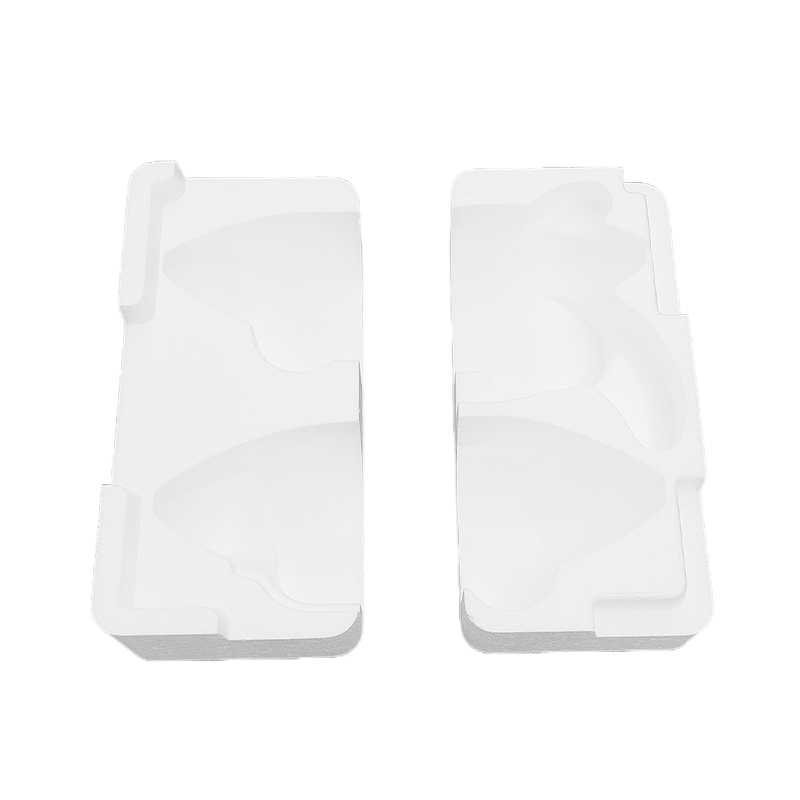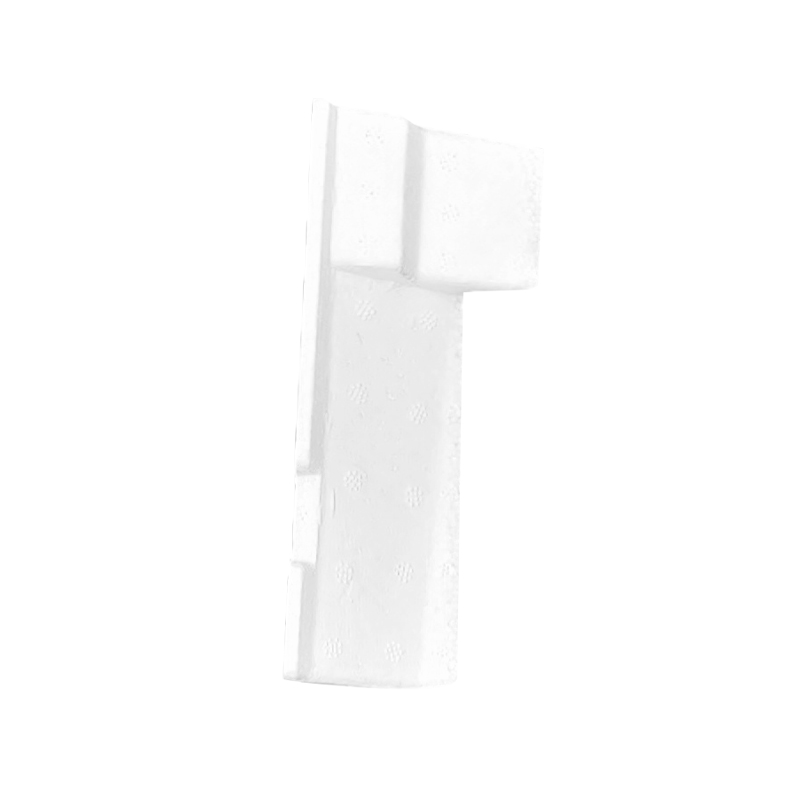How can batteries EPS packaging for batteries prevent friction and collisions during transportation through precise structural design?
Release Time : 2025-09-19
With the rapid development of the new energy industry, high-performance batteries such as lithium batteries are widely used in electric vehicles, energy storage systems, and consumer electronics. However, as delicate energy devices that are extremely sensitive to structural integrity, batteries are highly susceptible to safety hazards such as casing deformation, cell short circuits, and even thermal runaway during transportation and storage due to external impact, compression, or internal friction. Therefore, selecting an efficient, safe, and reliable packaging solution is crucial. EPS (expanded polystyrene) packaging, with its excellent cushioning properties and highly customizable structural design, has become the preferred solution for battery packaging.
1. Customizable Internal Cavity Structure for Precise Battery Positioning
The greatest advantage of batteries EPS packaging for batteries lies in its highly customizable structure. Manufacturers can create 3D models based on the actual size and shape of the battery, precisely designing the internal cavity's grooves, latches, and partitions. Each battery can be individually secured in its own dedicated "holder," achieving a "one-battery, one-space" layout. This tight-fitting design effectively prevents the batteries from moving freely within the packaging, fundamentally eliminating collisions and surface friction caused by bumps and vibrations during transportation, thereby protecting the integrity of the battery casing.
2. Energy-absorbing cushioning foam protects against external shock and compression
EPS material itself is composed of countless closed-cell foam spheres, which possess excellent elasticity and compression resilience. When the packaging box is subjected to drops, impacts, or stacking during transportation, the EPS lining absorbs most of the external impact energy through localized compression and deformation, acting as a "shock absorber." This cushioning mechanism effectively reduces the impact force transmitted to the battery body, preventing the battery casing from cracking or deforming due to sudden high pressure. Lithium batteries are particularly delicate in their internal cell structure. Even the slightest compression can damage the separator, causing contact between the positive and negative electrodes, leading to a short circuit or even fire. Battery EPS packaging, through its physical energy absorption properties, provides a solid safety barrier for the batteries.
3. Partition and layer design enhances friction and short-circuit protection.
In multi-battery packaging solutions, battery EPS packaging often utilizes partition or layer structures. Each partition not only provides support and separation but also physically isolates the cells, preventing contact between the positive and negative terminals and the risk of short circuits. The edges of the partitions are typically rounded or chamfered to prevent scratches on the battery surface. For modular battery modules, EPS can also be designed as a single tray structure, securing multiple cells on a single surface with consistent spacing. This not only improves packaging strength but also facilitates automated assembly and disassembly. This structural design significantly enhances stability during transportation.
4. Lightweighting and space optimization improve logistics efficiency and safety
EPS material has a low density and is lightweight, so it does not significantly increase the overall weight of the packaging, meeting the lightweight transportation requirements of modern logistics. Furthermore, its precise fit maximizes internal space in the packaging box, reducing unnecessary gaps and enabling more compact battery arrangement. This not only increases the loading capacity per box, saving storage and transportation space, but also reduces the risk of secondary damage caused by box movement. The tight layout, combined with the outer carton or wooden box, creates a dual protection system—soft inside and hard outside—further enhancing overall pressure resistance.
In summary, batteries EPS packaging, through precise structural design, integrates four key functions: customized positioning, energy absorption, physical isolation, and space optimization. This comprehensively addresses safety challenges faced by batteries during transportation, such as friction, collision, and crushing. It is more than just a packaging material; it's an intelligent protection system, providing reliable assurance for the safe circulation of high-value, high-risk products like lithium batteries.
1. Customizable Internal Cavity Structure for Precise Battery Positioning
The greatest advantage of batteries EPS packaging for batteries lies in its highly customizable structure. Manufacturers can create 3D models based on the actual size and shape of the battery, precisely designing the internal cavity's grooves, latches, and partitions. Each battery can be individually secured in its own dedicated "holder," achieving a "one-battery, one-space" layout. This tight-fitting design effectively prevents the batteries from moving freely within the packaging, fundamentally eliminating collisions and surface friction caused by bumps and vibrations during transportation, thereby protecting the integrity of the battery casing.
2. Energy-absorbing cushioning foam protects against external shock and compression
EPS material itself is composed of countless closed-cell foam spheres, which possess excellent elasticity and compression resilience. When the packaging box is subjected to drops, impacts, or stacking during transportation, the EPS lining absorbs most of the external impact energy through localized compression and deformation, acting as a "shock absorber." This cushioning mechanism effectively reduces the impact force transmitted to the battery body, preventing the battery casing from cracking or deforming due to sudden high pressure. Lithium batteries are particularly delicate in their internal cell structure. Even the slightest compression can damage the separator, causing contact between the positive and negative electrodes, leading to a short circuit or even fire. Battery EPS packaging, through its physical energy absorption properties, provides a solid safety barrier for the batteries.
3. Partition and layer design enhances friction and short-circuit protection.
In multi-battery packaging solutions, battery EPS packaging often utilizes partition or layer structures. Each partition not only provides support and separation but also physically isolates the cells, preventing contact between the positive and negative terminals and the risk of short circuits. The edges of the partitions are typically rounded or chamfered to prevent scratches on the battery surface. For modular battery modules, EPS can also be designed as a single tray structure, securing multiple cells on a single surface with consistent spacing. This not only improves packaging strength but also facilitates automated assembly and disassembly. This structural design significantly enhances stability during transportation.
4. Lightweighting and space optimization improve logistics efficiency and safety
EPS material has a low density and is lightweight, so it does not significantly increase the overall weight of the packaging, meeting the lightweight transportation requirements of modern logistics. Furthermore, its precise fit maximizes internal space in the packaging box, reducing unnecessary gaps and enabling more compact battery arrangement. This not only increases the loading capacity per box, saving storage and transportation space, but also reduces the risk of secondary damage caused by box movement. The tight layout, combined with the outer carton or wooden box, creates a dual protection system—soft inside and hard outside—further enhancing overall pressure resistance.
In summary, batteries EPS packaging, through precise structural design, integrates four key functions: customized positioning, energy absorption, physical isolation, and space optimization. This comprehensively addresses safety challenges faced by batteries during transportation, such as friction, collision, and crushing. It is more than just a packaging material; it's an intelligent protection system, providing reliable assurance for the safe circulation of high-value, high-risk products like lithium batteries.







